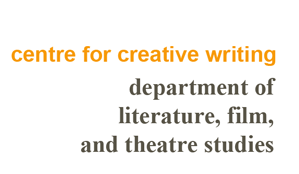Rebecca Solnit - Genius Loci
We are delighted to name Rebecca Solnit as a "Genius Loci" (Genius of place) and patron of the Memory Maps project. We are very pleased to be able to present the following extracts from two of her works, Infinite City : A San Francisco Atlas (Berkeley: University of California Press, 2010) and Field Guide to Getting Lost (Edinburgh: Canongate, 2006).
Two extracts
from Infinite City : A San Francisco Atlas (Berkeley: University of California Press, 2010)
Over the maps of the European theatre of war in 1945 can be inscribed the maps of bird migration, of the swallows and cranes who sabotage borders and nationalism by demonstrating that they do not exist in their avian world. All maps are blank in a sense, for while my story is mine, my map of San Francisco is also potentially yours; both can be charted on the same map, and where the past has been mapped the future may yet inscribe other adventures. The maps we get most of the time show conventional reality-freeways and not bird migration routes, shopping highlights and not subjective memories-but those other things can always be planted atop the usual versions.
Maps are always invitations in ways that texts and pictures are not; you can enter it, alter it, add to it, plan with it. A map is a ticket to actual territory, while a novel is only one to emotion and imagination (except for those novels that pay close attention to geographies, like Jim Nisbet's noir novel Prelude to a Scream, which includes dozens of real San Francisco locales from the moment its protagonist wakes up in the Panhandle minus one kidney, and one fake one). Infinite City is meant to be such an invitation to go beyond what is mapped within it. The amount of knowledge about a place is, in Borges's 1:1 scale map, co-extensive with it, but that map is not nearly as informative as our imaginary archive of atlases (and such a compendium nowadays could theoretically exist on the web, with off-site portals and energy sources and no other notable geography in and of itself). This mapping of San Francisco would beget something more akin to Borges's infinite libraries and endlessly expand to contain this atlas in hundreds of thousands of volumes, or perhaps no.
from Field Guide to Getting Lost (Edinburgh: Canongate, 2006)
The eighteenth-century mapmaker Jean Baptiste Bourguignon d'Anville pronounced, "To destroy false notions, without even going any further, is one of the ways to advance knowledge." To acknowledge the unknown is part of knowledge, and the unknown is visible as terra incognitas but invisible as selection—the map showing agricultural lands and principal cities does not show earthquake faults and aquifers, and vice-versa. On Sebastian Cabot's 1544 map of the Americas, the whole of South America is drawn in, and so is Central America and the eastern coast. It's a beautiful map in the mode of the time: dark people as tall as provinces walk across the southern continent, a pair of white bears far larger than Cuba and Haiti walk in the opposite direction, west, across the northern continent, and clumps of grass that would dwarf mountain ranges dot the landmasses. But the West Coast begins to dissolve where California starts. Beyond Baja California the line simply stops as though the world there was not yet made, as though it were neither land nor water, as though the creator had not yet finished this part of earth, as though substance and certainty together dissolved there, and the phrase terra incognita spreads across this unmarked expanse. On a map drawn up by Gastaldi two years later, Asia is fit like a puzzle piece into the blankness of the North American West, so that it looks as though you could walk from Tibet to Nevada (which is not yet named or marked) without any detour to the north. Strange woolly shapes like caterpillars or clouds dot the continent, and more clouds boil off the edge of the round earth. The Pacific proper appears on later maps, but a mythical island of Java sometimes appears on it, far larger than the island that would finally be saddled with the name. Brazil, the Amazon, and California are also real places named after imaginary ones. In that Pacific, California was long portrayed as a huge island just off the west coast of North America, and the northwest coast of that continent remained undrawn, one of the last expanses of terra incognita to the Europeans mapping the world. To imagine that you know, to populate the unknown with projections, is very different than knowing that you don’t, and the old maps depict both states of mind, the shangri-las and terra incognitos, the unknown northwest coast and the imagined island of California (whose west coast was nevertheless drawn in with some accurate details and names). When someone doesn’t show up, the people who wait sometimes tell stories about what might have happened and come to half believe the desertion, the abduction, the accident. Worry is a way to pretend that you have knowledge or control over what you don’t—and it surprises me, even in myself, how much we prefer ugly scenarios to the pure unknown.

About the author
Rebecca Solnit
Writer, historian, and activist Rebecca Solnit is the author of thirteen books about ecology, environment, landscape, community, art, politics, hope, and memory, most recently the bestselling Infinite City: A San Francisco Atlas, a volume of 19 essays and 22 innovative maps, for which she commissioned and coordinated contributions from 27 writers, artists, and cartographers.
Other books include A Paradise Built in Hell: The Extraordinary Communities that Arise in Disaster; A Field Guide to Getting Lost; Hope in the Dark: Untold Histories, Wild Possibilities; Wanderlust: A History of Walking; and River of Shadows, Eadweard Muybridge and the Technological Wild West (for which she received a Guggenheim, the National Book Critics Circle Award in criticism, and the Lannan Literary Award).
A product of the California public education system from kindergarten to graduate school, she is a contributing editor to Harper's and regular contributor to the political site Tomdispatch.com.


